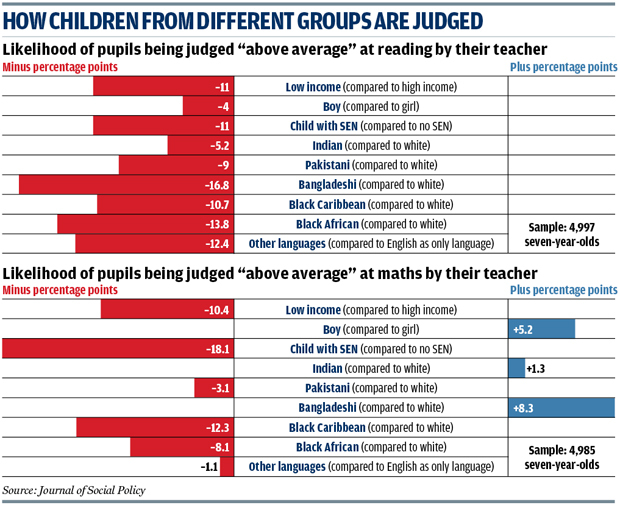Author: Tammy Campbell, University College London Institute of Education
Published by: Journal of Social Policy, July 2015

SUMMARY
At primary school level, teachers' assessments are the main way children's attainment levels are judged. Benefits to this approach include the fact such assessments provide a wider view of a child's abilities than a test and avoid the stress testing can place on children. However, past research has shown teachers' assessments of primary school children can be affected by bias. Tammy Campbell, from the University College London Institute of Education's department of quantitative social science, set out to discover whether factors such as family income level, gender, special educational needs (SEN), ethnicity and having English as an additional language could affect teachers' assessment of pupils' ability and attainment.
Register Now to Continue Reading
Thank you for visiting Children & Young People Now and making use of our archive of more than 60,000 expert features, topics hubs, case studies and policy updates. Why not register today and enjoy the following great benefits:
What's Included
-
Free access to 4 subscriber-only articles per month
-
Email newsletter providing advice and guidance across the sector
Already have an account? Sign in here

